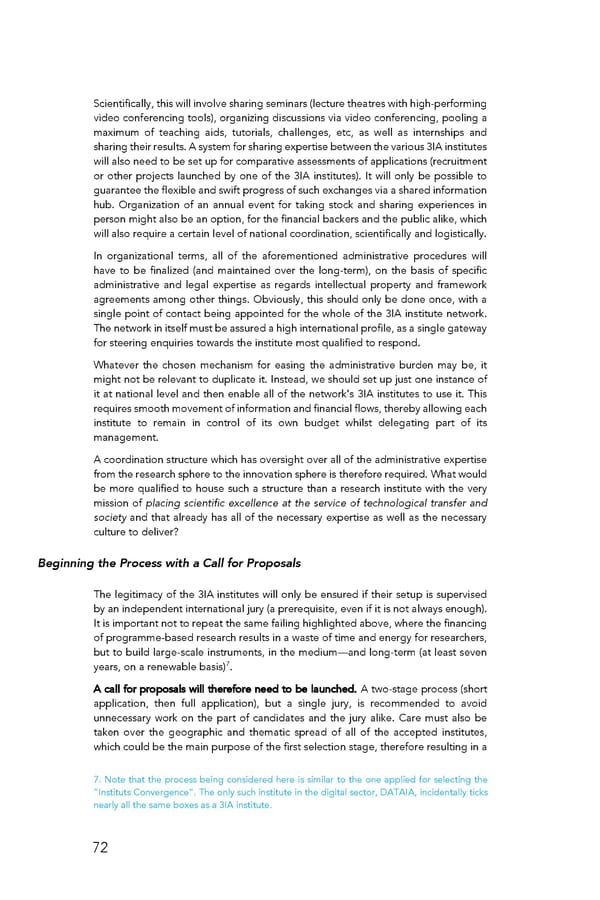Scientifically, this will involve sharing seminars (lecture theatres with high-performing video conferencing tools), organizing discussions via video conferencing, pooling a maximum of teaching aids, tutorials, challenges, etc, as well as internships and sharing their results. A system for sharing expertise between the various 3IA institutes will also need to be set up for comparative assessments of applications (recruitment or other projects launched by one of the 3IA institutes). It will only be possible to guarantee the flexible and swift progress of such exchanges via a shared information hub. Organization of an annual event for taking stock and sharing experiences in person might also be an option, for the financial backers and the public alike, which will also require a certain level of national coordination, scientifically and logistically. In organizational terms, all of the aforementioned administrative procedures will have to be finalized (and maintained over the long-term), on the basis of specific administrative and legal expertise as regards intellectual property and framework agreements among other things. Obviously, this should only be done once, with a single point of contact being appointed for the whole of the 3IA institute network. The network in itself must be assured a high international profile, as a single gateway for steering enquiries towards the institute most qualified to respond. Whatever the chosen mechanism for easing the administrative burden may be, it might not be relevant to duplicate it. Instead, we should set up just one instance of it at national level and then enable all of the network's 3IA institutes to use it. This requires smooth movement of information and financial flows, thereby allowing each institute to remain in control of its own budget whilst delegating part of its management. A coordination structure which has oversight over all of the administrative expertise from the research sphere to the innovation sphere is therefore required. What would be more qualified to house such a structure than a research institute with the very mission of placing scientific excellence at the service of technological transfer and society and that already has all of the necessary expertise as well as the necessary culture to deliver? Beginning the Process with a Call for Proposals The legitimacy of the 3IA institutes will only be ensured if their setup is supervised by an independent international jury (a prerequisite, even if it is not always enough). It is important not to repeat the same failing highlighted above, where the financing of programme-based research results in a waste of time and energy for researchers, but to build large-scale instruments, in the medium—and long-term (at least seven years, on a renewable basis)7. A call for proposals will therefore need to be launched. A two-stage process (short application, then full application), but a single jury, is recommended to avoid unnecessary work on the part of candidates and the jury alike. Care must also be taken over the geographic and thematic spread of all of the accepted institutes, which could be the main purpose of the first selection stage, therefore resulting in a 7. Note that the process being considered here is similar to the one applied for selecting the "Instituts Convergence". The only such institute in the digital sector, DATAIA, incidentally ticks nearly all the same boxes as a 3IA institute. 72
 For a Meaningful AI - Report Page 72 Page 74
For a Meaningful AI - Report Page 72 Page 74